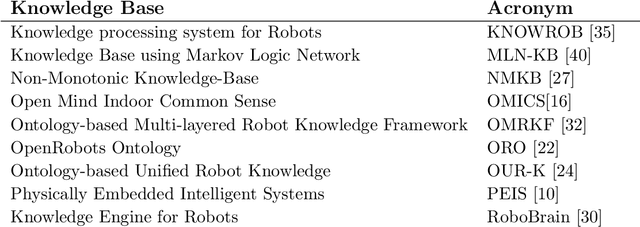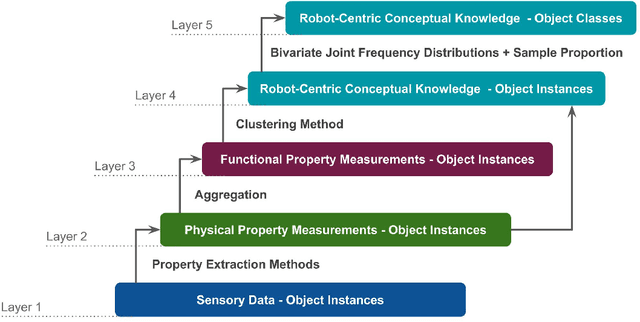Narender Pulugu
From Multi-modal Property Dataset to Robot-centric Conceptual Knowledge About Household Objects
Jun 26, 2019



Abstract:Tool-use applications in robotics require conceptual knowledge about objects for informed decision making and object interactions. State-of-the-art methods employ hand-crafted symbolic knowledge which is defined from a human perspective and grounded into sensory data afterwards. However, due to different sensing and acting capabilities of robots, their conceptual understanding of objects must be generated from a robot's perspective entirely, which asks for robot-centric conceptual knowledge about objects. With this goal in mind, this article motivates that such knowledge should be based on physical and functional properties of objects. Consequently, a selection of ten properties is defined and corresponding extraction methods are proposed. This multi-modal property extraction forms the basis on which our second contribution, a robot-centric knowledge generation is build on. It employs unsupervised clustering methods to transform numerical property data into symbols, and Bivariate Joint Frequency Distributions and Sample Proportion to generate conceptual knowledge about objects using the robot-centric symbols. A preliminary implementation of the proposed framework is employed to acquire a dataset comprising physical and functional property data of 110 houshold objects. This Robot-Centric dataSet (RoCS) is used to evaluate the framework regarding the property extraction methods, the semantics of the considered properties within the dataset and its usefulness in real-world applications such as tool substitution.
 Add to Chrome
Add to Chrome Add to Firefox
Add to Firefox Add to Edge
Add to Edge